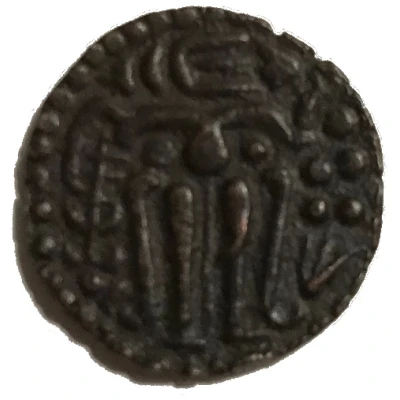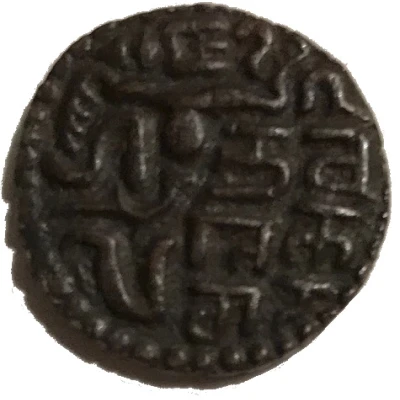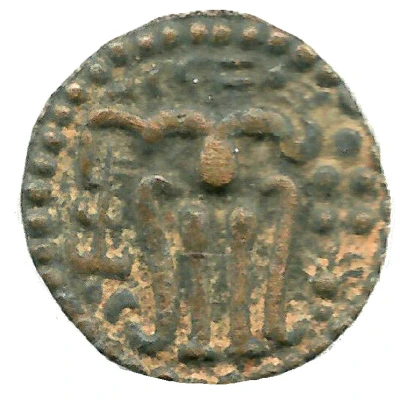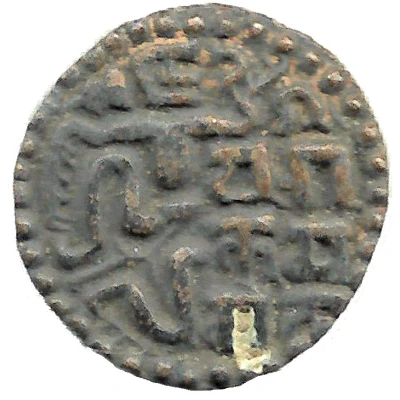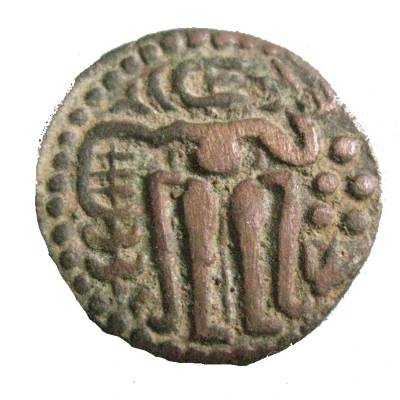
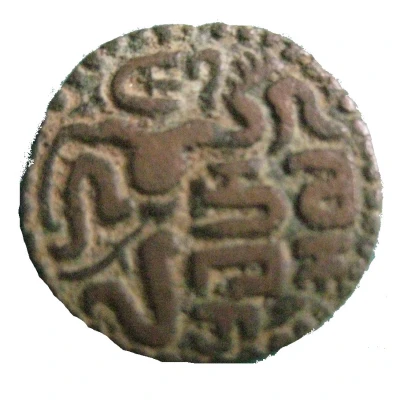

1 Massa - Buvanaikabahu I ND
| Copper | 4.13 g | 19 mm |
| Issuer | Kingdom of Dambadeniya (Sinhalese States) |
|---|---|
| King | Bhuvanaikabahu I (1271-1283) |
| Type | Standard circulation coin |
| Years | 1273-1301 |
| Value | 1 Massa |
| Currency | Massa (-1500) |
| Composition | Copper |
| Weight | 4.13 g |
| Diameter | 19 mm |
| Thickness | 2.5 mm |
| Shape | Round (irregular) |
| Technique | Hammered |
| Orientation | Coin alignment ↑↓ |
| Demonetized | Yes |
| Updated | 2024-10-07 |
| Numista | N#53018 |
|---|---|
| Rarity index | 72% |
Reverse
Singhalese script
Lettering: Devanagari Legend Writing *Sri bhu va nai ka ba hu*
Translation: King Bhuwanaikabahu
Edge
Plain
Comment
King Buvanaikabahu IHouse of Siri Sanga Bo | Yapahuwa - (1270 - 1283)
Bhuvanaikabahu I was King of Dambadeniya in the 13th century, who ruled from 1270 to 1283. He succeeded his brother Vijayabahu IV as King of Dambadeniya and was succeeded by his nephew Parakkamabahu III after an Interregnum of 19 years. Bhuvanaikabahu I is known to have resided in Yapahuwa.
http://www.mahawansaya.com/king-in-sri-lanka-king-buvanaikabahu-i-203.html
Yapahuwa was one of the ephemeral capitals of medieval Sri Lanka. The citadel of Yapahuwa lying midway between Kurunagala and Anuradhapura was built around a huge granite rock rising abruptly almost a hundred meters above the surrounding lowlands.
In 1272, King Bhuvenakabahu transferred the capital from Polonnaruwa to Yapahuwa in the face of Dravidian invasions from South India, bringing the Sacred Tooth Relic with him. Following the death of King Bhuvenakabahu in 1284, the Pandyans of South India invaded Sri Lanka once again, and succeeded in capturing Sacred Tooth Relic. Following its capture, Yapahuwa was largely abandoned and inhabited by Buddhist monks and religious ascetics. https://en.wikipedia.org/wiki/Yapahuwa
Interesting fact
One interesting fact about this coin is that it features a unique blend of Indian and Sri Lankan influences in its design. The coin's obverse side bears a depiction of a seated lion, which is a common motif in Sri Lankan art and symbolism, while the reverse side features a stylized version of the Sri Lankan flag, which was not officially adopted until much later. This blend of styles reflects the cultural exchange and fusion that occurred during the reign of King Buvanaikabahu I, who ruled the Kingdom of Dambadeniya during the 13th century.
